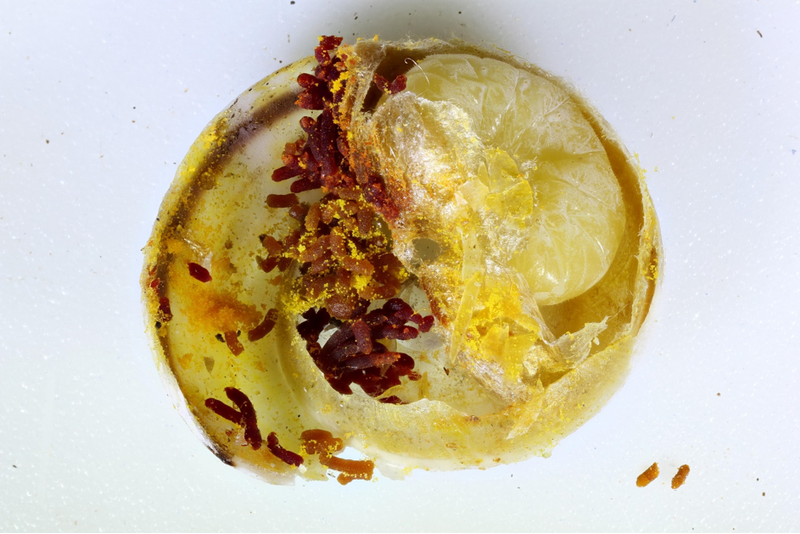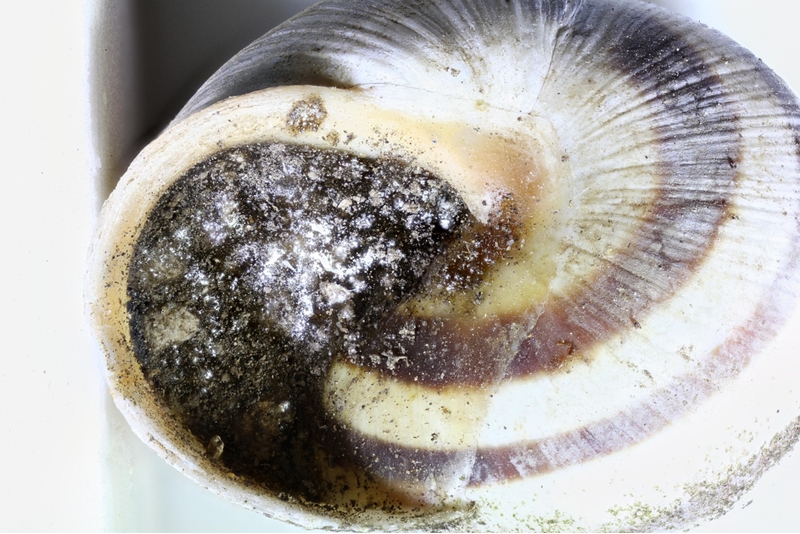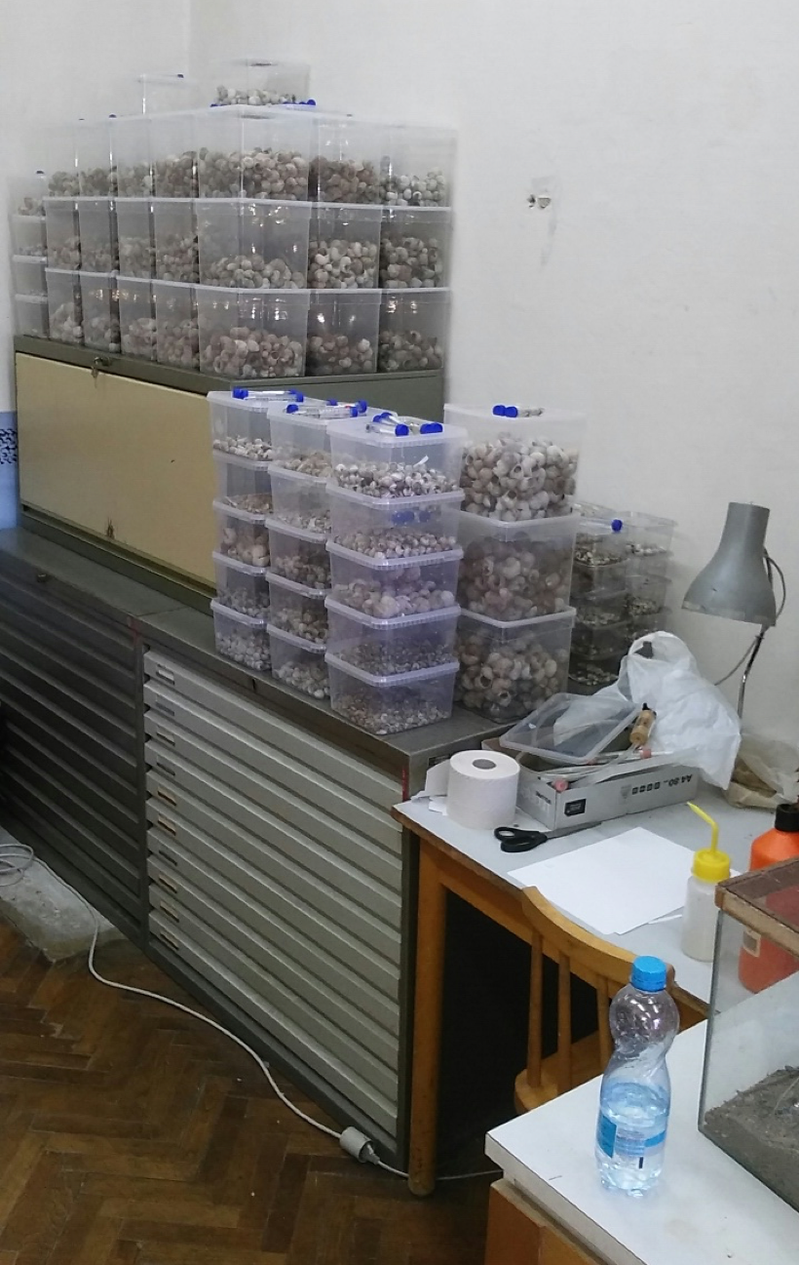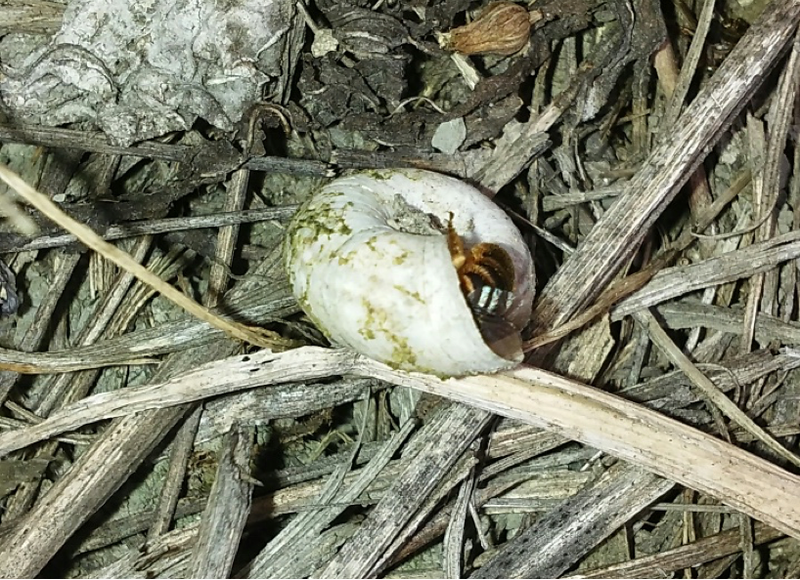Bees nesting in empty gastropod shells

Faculty of Science UHK
Project Description
Solitary species of bees use various types of cavities for their nesting - hollows in dead wood, dry plant stems or stalks, or holes in stony walls and rocks are most frequently used. Several species of mason bees make their nests inside empty snail shells. These species are of high interest for nature conservation since they do not adopt other types of cavities and thus have to follow the distribution of their preferred snail species. In central Europe, the following bees that inhabit snail shells have been recorded: four relatively widespread species Osmia aurulenta, Osmia bicolor, Osmia bicolor, and Hoplosmia spinulosa, and three rarer species Rhodanthidium septemdentatum, Osmia andrenoides and Osmia versicolor. All these species occur in open xerotherm vegetation, most of them prefer steppe and forest-steppe formations, and some of them are being registered with an increasing frequency at antropogenic sites, i.e. on road and rail embankments, in spoil heaps or in abandoned limestone quarries.

Interestingly, these bees were considered rare in the past, but recently they have been appearing more commonly. Similarly, also their parasites Chrysura cuprea, Chrysura dichroa and Chrysura trimaculata have been appearing in increasing abundance. The biology of the bees that adopt snail shells is poorly understood. However, several studies related to this sphere have been published. These include e. g. Bellmann (1981, 1997), who elucidated many aspects of the biology of Osmia bicolor, Osmia aurulenta, and partly also of Osmia rufohirta. Müller (1994) published a comprehensive study on the biology of Hoplosmia spinulosa, and Erbar and Leitz (1997) described the nesting biology of the south-European species called Rhodanthidium siculum, which is a close relative of vR. septemdentatum.

Our team focuses on the ecology of bees nesting in empty gastropod shells, as well as other insects and invertebrates associated with this unique environment. We started this kind of research in 2016 when we sampled over 10,000 empty gastropod shells of the size reached by a sub-adult Xerolenta obvia or bigger individuals. These shells were collected at 23 pairs of localities in the Czech Republic and Hungary (each pair consisted of one near-natural site and one antropogenic site nearby). We collected all invertebrates that escaped or were reared from the shells and identified them with the help of a group of specialists. The preliminary results are very interesting, showing a diverse community of insects and spiders present in empty gastropod shells. Some of these species, previously thought to be very rare or extinct in central Europe, were recorded in large amounts, and thus are more common than was supposed before. Some of the bees nesting in empty gastropod shells show a high preference for one specific size or species. We have also recorded the nesting of other generalist species which probably utilize the shell only occasionally. The results will be published soon.

We also focus on the nesting biology of bees that adopt snail shells. We are interested in the nesting behaviour, nest structures, host plants, phenology, parasites, and other aspects of the nesting biology of these bee species. The examined sites are not limited to the territory of the Czech Republic. The research performed in south Europe (especially Spain) is of particular importance – our plan is to study the nesting biology of species absent in local landscapes, such as Rhodanthidium sticticum, Osmia ferruginea, and Osmia versicolor. Our studies in Spain are carried out in cooperation with the team of Jordi Bosch (CREAF, Barcelona) and with Daniel Romero Lopez (Universidad Madrid). Besides observational studies, in 2017 we started the first field experiments that focus on the nesting preferences of bees that adopt snail shells, and we also collected filamentous fungi that kill larvae of bees nesting in the shells.



Duration of the research period: Since 2016. The first manuscripts are expected to be finalized in 2018.
References:
Bellmann H. 1981: Zur Ethologie mitteleuropäischer Bauchsammlerbienen (Hymenoptera, Megachilidae): Osmia bicolor, O. aurulenta, O. rufohirta, Anthidium punctatum, Anthidiellum strigatum, Trachusa byssina. Veröffentlichungen für Naturschutz und Landschaftspflege Baden-Württemberg 53/54: 477-540.
Bellmann H. 1997: Bienen in Schneckenhäusern. Biologie in unserer Zeit 27(2): 106-113.
Erbar C. and Leins P. 2017: Sex and breeding behaviour of the Sicilian snail-shell bee (Rhodanthidium siculum Spinola, 1838; Apoidea-Megachilidae): preliminary results. Arthropod-Plant Interactions 11: 317-328.
Müller A. 1994: Die Bionomie der in leeren Schneckengehäusen nistenden Biene Osmia spinulosa (Kirby, 1802) (Hymenoptera, Megachilidae). Veröffentlichungen für Naturschutz und Landschaftspflege Baden-Württemberg 68/69: 291-334.
Our published research:
Bogusch P., Roháček J., Baňař P., Astapenková A., Kouklík O., Pech P., Janšta P., Heller K., Hlaváčková L., Heneberg P. 2019: The presence of high numbers of empty shells in anthropogenic habitats is insufficient to attract shell adopters among the insects. Insect Conservation and Diversity 12(3):193-205.
Heneberg P., Bogusch P., Hlaváčková L. 2020: Experimental confirmation of empty snail shells as limiting resources for specialized bees and wasps. Ecological Engineering 142(1):105640.
Bogusch P., Hlaváčková L., Rodriguez Gasol N., Heneberg P. 2020: Near-natural habitats near almond orchards with presence of empty gastropod shells are important for solitary shell-nesting bees and wasps. Agriculture Ecosystems & Environment 299(1):106949.
Bogusch P., Hlaváčková L., Petr L., Bosch J. 2020: Nest structure, pollen utilization and parasites associated with two west-Mediterranean bees (Hymenoptera, Apiformes, Megachilidae) nesting in empty snail shells. Journal of Hymenoptera Research 76(7–8):113-125.
Bogusch P., Hlaváčková L., Šilhán K., Horsák M. 2020: Long-term changes of steppe-associated wild bees differ between shell-nesting and ground-nesting species. Journal of Insect Conservation 24: 513-523.
Project supervisor
Section navigation: Topics

